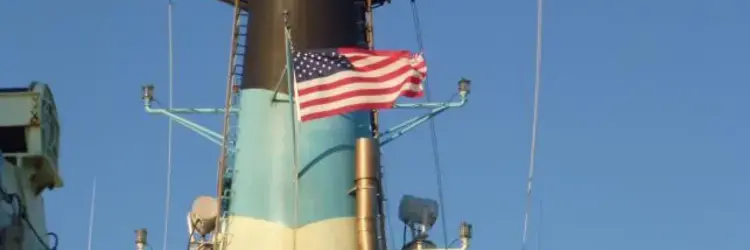
In 2017, the currently posted ship schedules for the entire UNOLS academic research fleet lists a total of 3,129 operational days (which is a combination of both funded and pending days). It is important to note the ships are also engaged in a host of other activities, beyond the operational charge days, that are necessary to keep the efficiency and reliability of the fleet at high levels. These activities include loading and unloading science gear, shipyard and maintenance periods, inspections and sea trials, etc. It is through the support of our federal funding partners coupled with the scientific endeavors and achievements of the principal investigators that enables our ships to be so active. Of course the ships' crews, technicians, marine operation centers, and administrative staff all play an important role supporting oceanographic research at sea.
Our two newest additions, R/V Neil Armstrong and R/V Sally Ride will have their first full year of operations. Research expeditions will keep the academic fleet plying the waters of the Gulf of Mexico, North and South Atlantic Oceans, North and South Pacific Oceans, and the Arctic Ocean. The ships will also venture into bays, sounds, the Great Lakes, and seas all in an effort to reach each scientific station as outlined in the cruise plan.
From the Irminger Sea to the South Atlantic, Northeast Pacific, and North Atlantic, our ships will be servicing the arrays of the Ocean Observatories Initiative. The ships will be continuing long term time series data collection which began back in 1988 with the Bermuda Atlantic Time Series and the Hawaii Ocean Time Series. The earth's magnetic field and crust will be studied around Isla de Pascua (Easter Island), as well as the subduction zone off Chile, the origin of major earthquakes. Undergraduate and early career students will learn about marine seismic research, autonomous unmanned vehicles, and how to become a chief scientist in the waters of the Gulf of Mexico, the Oregon Coast, and the Great Lakes.
Our coastal and local vessels will stay closer to their homeports to assist researchers in understanding bioluminescene and light detection in deep sea marine shrimp, toxic effects of oil on pelagic and coastal fish species, and the dispersal properties of hydrocarbons. The global ships will be heading to destinations such as Chile, Costa Rica, Uruguay and the Cape Verde Islands to complete projects such as installation of a seafloor geodesy observatory in the Northern Chile Subduction zone and investigating biological, chemical, and physical linkages between chemosynthetic communities in hydrothermal seeps and the surrounding deep sea. Wave profiles around the islands of Micronesia will also be part of the mix. The R/V Thomas G. Thompson will complete a year-long mid-life refit which will help to extend the life of the ship for many years.
The outlook for 2017 is full of exciting research expeditions, which will lead to important discoveries. We wish all of our scientists, researchers, technicians and crews the best of luck with their important and exciting work!